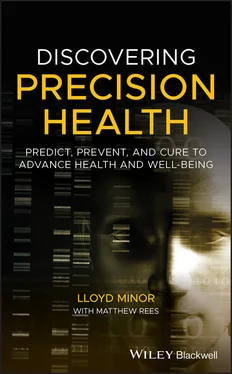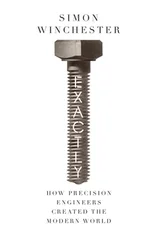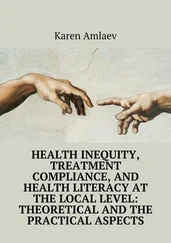Born in Little Rock, Arkansas, I grew up in a home that placed great emphasis on education. I attended all‐white schools through the eighth grade, but as a part of a court‐ordered desegregation plan, I was bused to a junior high school across town for ninth grade. This was a defining moment in my life. I immediately learned that what was billed as “separate but equal” was separate but certainly not equal. In the scarcely stocked library, books on the lower shelves had been damaged by rats. Banisters were missing from stairwells. Plaster was peeling from the walls. These were the bitter fruits of racial prejudice. It was eye‐opening to see this injustice, and it had a profound effect on me. It kindled in me an interest in diversity and inclusion that continues to this day.
I attended the famously desegregated Little Rock Central High School where I was inspired by the elegance and rigor of math, physics, and chemistry. But I was also drawn to the challenges of bringing more quantitative approaches to biology. It was then that I first thought about the importance of using these disciplines to solve real‐world problems and bring profound benefits to the lives of people. Becoming a physician‐scientist was at the intersection of these interests.
While at Brown University for college and medical school, I took a bioengineering course as an undergraduate that sparked my interest in the physiology of the inner ear balance system (known as the vestibular system). The course focused on the use of mathematical and engineering models to study and understand physiological systems. The professor used the vestibular system, and the eye movements that depend upon input from it, as an example of how you could use relatively straightforward mathematical models to describe the way the system worked. Even more importantly, you could also state hypotheses, design experiments, and interpret data in the conceptual framework established by these models. This approach appealed to my fascination with how complex systems work, and I devoted my early career to understanding the vestibular system and treating disorders that result from its dysfunction.
My goals and my training as a scientist and clinician emphasized an understanding of the functional mechanisms of the system I was studying and the ways those mechanisms are altered in disease. As was the case for most of my generation of physician‐scientists, I was firmly focused, in the parlance of this book, on the “cures” aspect of medicine. It was through my experiences as a scientist pursuing basic research directed towards understanding the intricate physiology of the vestibular system, and a clinician focused on the diagnosis and treatment of vestibular disorders, that I experienced first‐hand the impact of discovery‐focused research on health and medicine.
In the spring of 1995, two years after I had joined the faculty of the Department of Otolaryngology—Head and Neck Surgery at Johns Hopkins, a man came to my office and explained that he was suffering from a bizarre set of symptoms. For example, when he sang in the shower, he would see the shampoo bottle, the loofah, and the shower head moving in a circular motion. Similarly, if he hummed a tone or heard certain loud noises in his right ear while looking in the mirror, he saw that his eyes were moving in conjunction with the sounds. When I tested him, I could clearly see that his eyes moved in a consistent pattern—upward and counterclockwise—and the pattern was tightly linked to the sound.
I suspected the problem stemmed from an opening in the bone that should cover the superior semicircular canal, which is one of the three tiny canals hidden deep within the inner ear. (These canals serve as part of the vestibular system, a set of inner‐ear structures that provide input to the brain on motion, equilibrium, and spatial orientation.) I made this hypothesis because there is a well‐recognized relationship between the orientation of individual semicircular canals and the eye movements evoked by stimulation of these canals (activation of a canal results in eye movements in the plane of the canal). An opening in the bone covering the superior canal would, I reasoned, make it responsive to sound and pressure stimuli because of the mechanical flow of fluids in the inner ear. Several years of studies on this and other patients with similar symptoms and signs accompanied by related basic research confirmed that this was, indeed, the mechanism.
I named this condition superior canal dehiscence (SCD) syndrome , and my colleagues and I at Johns Hopkins developed an operation to correct it. We published the first paper describing the disorder in 1998 and also showed that there were specific hearing abnormalities associated with it [15]. It’s been extremely satisfying to know that hundreds of people have now had operations to treat SCD and that their everyday lives have been improved.
My point in mentioning this work here is that it was an understanding of the physiology of the vestibular system, informed by discovery‐based research, that enabled this syndrome to be identified and subsequently treated. SCD as a disorder did not originate with the patients I initially saw in 1995. There had been reports in the medical literature over several previous decades describing people with symptoms that were almost certainly due to this disorder. But the association with a specific abnormality of the vestibular system had never been made because the scientific underpinnings had never been studied. There are many examples in this book of scientific advances that have led to improvements in human health that were not necessarily anticipated or planned.
A desire to impact research, education, and health systems on a broader level eventually led me to leadership positions in medicine and research universities, culminating in a position as dean of medicine at Stanford. I also came to realize that having a truly transformative impact on health and health care delivery requires much more emphasis on prediction and prevention than has been the case in the past.
Along the way, in my educational, training, and work experiences I have learned the values of listening carefully, acquiring and imparting rigorous scientific and technical training, and assessing the potential for systems errors that can lead to adverse consequences. In my own work and in the activities of others I have seen the value of persistent and diligent struggle in the face of uncertainty, complexity, and the risk of failure. I have come to appreciate the power inherent in the interface between technology and health. I also learned, firsthand, the importance of working within an environment rich in multiple complementary disciplines where ideas can cross‐pollinate and expertise can be leveraged in new and creative ways.
I happily find myself in one of the few places where this vision of Precision Health can become a reality. At Stanford, we can draw on our world‐class medicine, basic biological and physical sciences, engineering, and computer science, along with our renowned statisticians, educators, social scientists, ethicists, designers, economists, and business and legal scholars—not to mention our collaborative relationships with leading Silicon Valley innovators.
THE ORIGINS OF PRECISION HEALTH AT STANFORD
Having spent my professional life in and around research universities and academic medical centers, I—like many other health care professionals with experiences similar to mine—was full of opinions about how to improve care and how to make academic medical centers more effective. All of my education and work history helped to shape my approach to leading Stanford Medicine. But when it came to developing the Precision Health vision, there were three things in particular that influenced me: a conference, a speech, and a book.
Читать дальше












